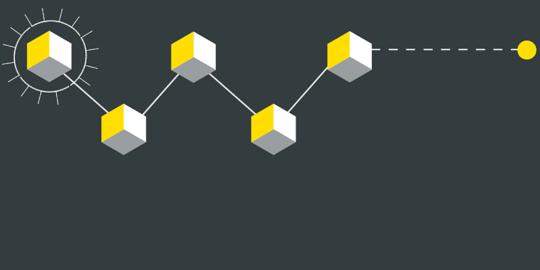We’re currently witnessing a new technological evolution, one that will change the way in which we perceive and relate to the world around us. Millions of everyday objects and tools are being connected to the Internet and they will soon surpass the number of connected computers and mobile devices.
In time, it is possible that there will be very limited physical space on our planet that will not be connected to the Internet, and soon we will be able to obtain data and information from the environment surrounding us and interact with the world through our connected machines.
Practical applications of this Internet of Things (“IoT”) are already giving us useful new services: we can monitor our home from a distance and interact with its automated systems, by remotely activating our heating, lawn mowers or sprinkler systems. We can do the same with our vehicles, or we can get images from webcams located all around the world.
Our smart connected fridge can already order products online, and could soon collect nutritional information on the food we store inside it. It could monitor expiration dates and give us recipes and ideas to avoid wasting our food.
We can already monitor traffic, get real time information on the location of the next train or bus, all because these infrastructures and vehicles are connected to the Internet.
Shipping companies can access the exact physical location of their fleets, and will soon be able to monitor the status of the cargo they transport and provide this live data feed to their customers, enabling them not only to know when their goods will be delivered but also in what condition they will arrive.
Factories will be constantly connected to their dedicated logistics and shipping chains, monitoring the status of the raw material and goods that will enter the manufacturing floor, controlling their products during the entire production cycle, sending (or selling) relevant information to other suppliers, customers or distributors in real time, enabling a completely new level of interaction and giving a new meaning to the term “real time manufacturing”.
Manufacturers of complex products will be able to access them remotely once on the market, identify defects and fix them by downloading a software patch or upgrade (a feat recently achieved by Tesla, who fixed an overheating problem during battery recharging simply with a software patch download), or, alternatively, send messages to users giving them detailed information on the possible problem and instructions on how (and where) to fix it.
In other cases accidents could be prevented simply because a remote analytical diagnostic could detect and fix problems in advance.
Previously unthinkable innovations in health services are being developed using internet-enabled wearable or implanted monitoring medical technology. These devices can send data and information, alerting the patient, doctors and even an ambulance automatically when certain parameters are met.
Alongisde the infinite potential to be exploited in the wonderful new world of the IoT, there are also legal aspects to consider and address.
In this series of seven articles, we will start addressing some of the legal implications and trying to understand where we are with the current legislation and which legal innovations we will need to allow this technical evolution to succeed.
The next part of the series, regarding Data Protection, will be released next week. In the coming weeks we will also touch on:
- Data protection
- Regulatory implications and standards
- Standard contracting and automatic contracting
- New forms of liability and
- Cybersecurity
Followed by a brief conclusion.
Read the rest of the series
- Part 1: Introduction
- Part 2: Data Protection
- Part 3: Regulatory implications and standards
- Part 4: Standard contracting and automatic contracting
- Part 5: New forms of liability
- Part 6: Cybersecurity
- Part 7: Conclusions
Follow us at @TwobirdsTech to keep up to date with the series and more legal insights from Bird & Bird.
Author: Roberto Camilli
Senior European Counsel
Italy
Tel: +39 02 30 35 60 00




